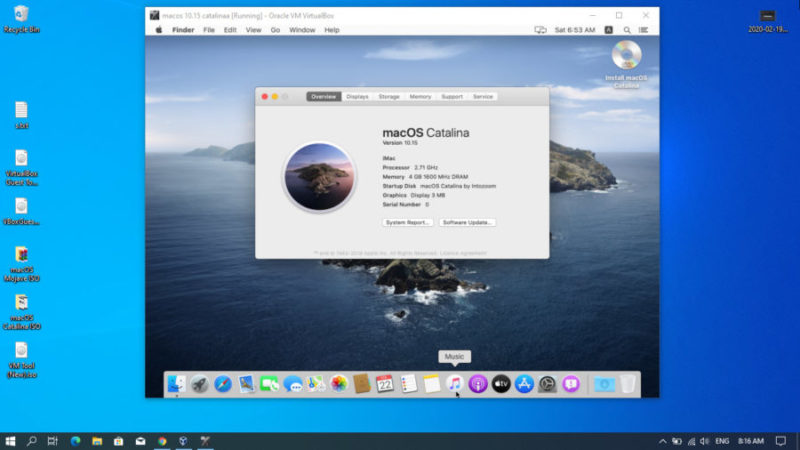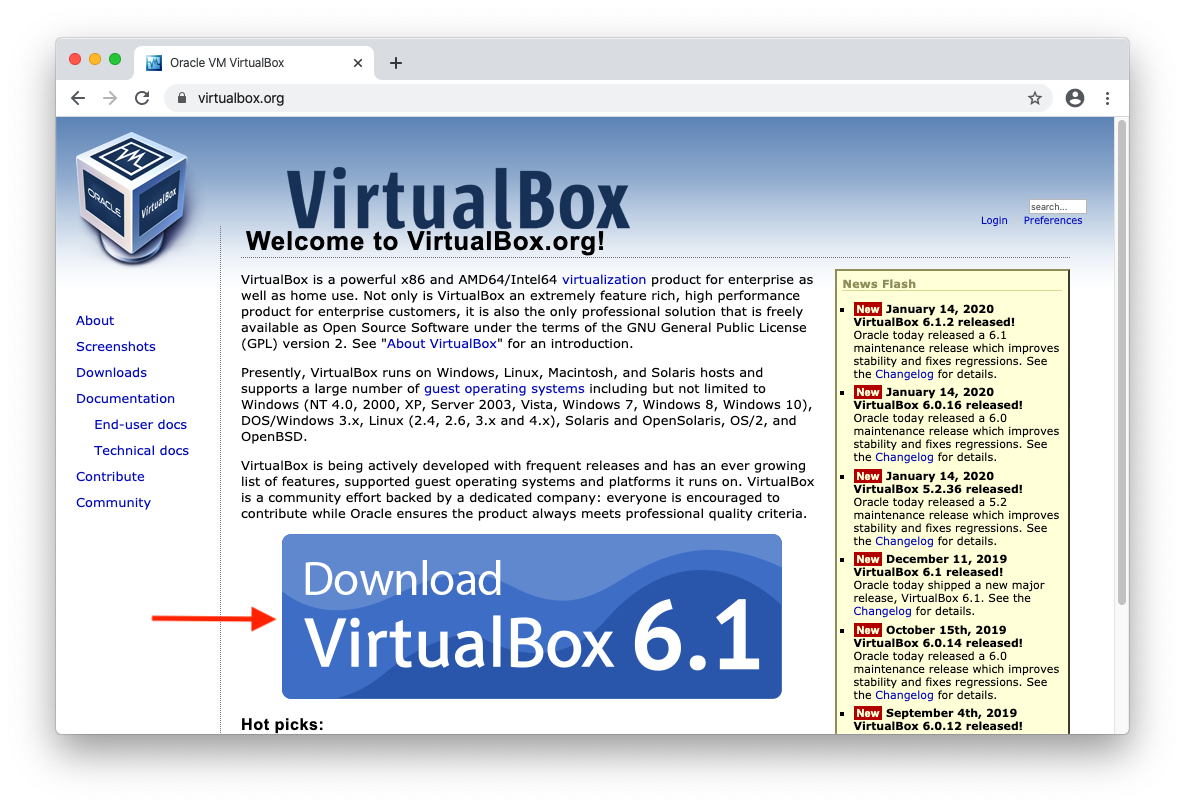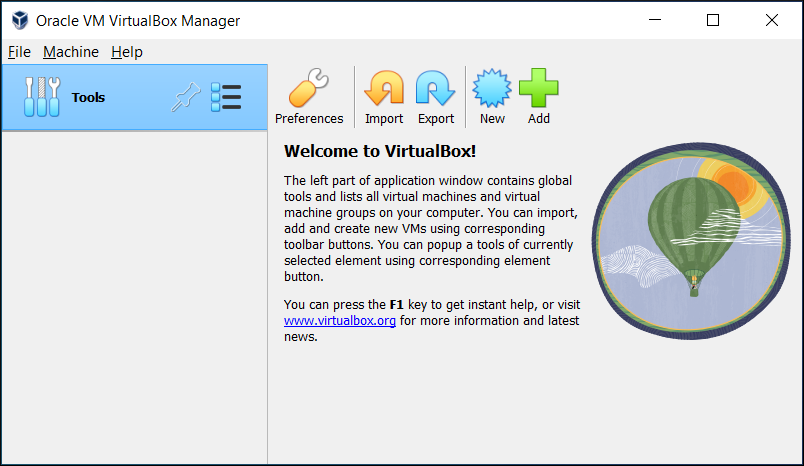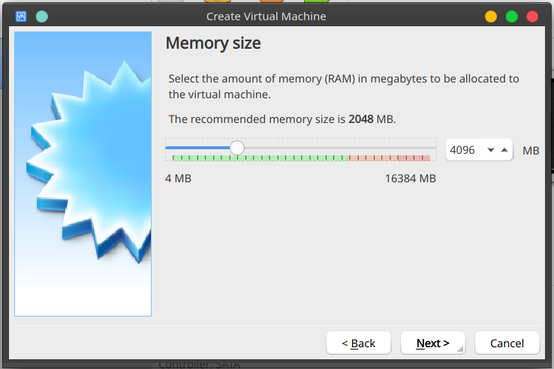
- #CAN I RUN MAC OS IN VIRTUALBOX MAC OS X#
- #CAN I RUN MAC OS IN VIRTUALBOX MAC OS#
- #CAN I RUN MAC OS IN VIRTUALBOX INSTALL#
- #CAN I RUN MAC OS IN VIRTUALBOX PATCH#
#CAN I RUN MAC OS IN VIRTUALBOX MAC OS#
Some options are VirtualBox (Windows, Linux, Mac OS X), VMware Player (Windows, Linux), VMware Fusion (Mac OS X) and Parallels Desktop (Mac OS X). This is perhaps the biggest reason that apple doesn’t care about stopping Hackintosh as much as they do jailbreaking, jailbreaking requires that the iOS system be exploited to gain root privileges, these exploits allow for arbitrary code execution with root.
#CAN I RUN MAC OS IN VIRTUALBOX INSTALL#
Double click and install it as you normally do in the real OS. Yes, you can install software by copying them into pen drive and get access to it in VirtualBox or VMware. The guest VM is a completely independent system from an OS and software perspective. In addition, creating a Hackintosh computer violates Apple’s end-user license agreement (EULA) for any operating system in the OS X family.Ĭan you install software on a virtual machine? Is it illegal to Hackintosh?Īccording to Apple, Hackintosh computers are illegal, per the Digital Millennium Copyright Act.
#CAN I RUN MAC OS IN VIRTUALBOX PATCH#
This can be done after the preparation of a bootable installation image of the ISO format with hdiutil, applying a free patch on an ESXi server and configuring certain VM settings. MacOS can be installed on a VMware VM running on ESXi. The same would apply to VMware Fusion and Parallels. Therefore yes it would be legal to run OS X in VirtualBox if VirtualBox is running on a Mac. Is it legal to install Mac OS on a virtual machine?Īnswer: A: It is only legal to run OS X in a virtual machine if the host computer is a Mac.
#CAN I RUN MAC OS IN VIRTUALBOX MAC OS X#
There you have it Mac OS X Snow Leopard running in VirtualBox on your Windows-based machine. When the installation is done click the Right-Ctrl key and unmount the CD/DVD drive for now. Step 8: Click on “Install” to begin your installation. The next screen will show you the words choose the 20GB VBOX HARDDISK, and click on the “Erase” button.

Do that and click on “Next” then “Continue and Agree”. Step 7: When all of this is done the VM should start booting. Finally, click on the main start button to begin the process. Once you have highlighted it, click on the “Select” button and then click on “OK”. You will now be able to find the OSX86 iso that you downloaded earlier in this process. You will see a folder with a green arrow. Step 6: Choose “Storage” from the menu on the left and choose the word “Empty”, you will see it under the OSX.vdi.

Uncheck the box next to the words “Enable EFI (special OSes only)”. Step 5: Click on “Settings” and then “System”.

Then click on “Next” to finish up with the wizard. If you choose the “Static” option, be sure that you know what you need and allot accordingly.

This will allow the system to expand as your needs do. If you are not sure how much you need, choose the “Dynamic” option. Step 4: Make a new hard drive for your VM. The maximum in VirtualBox is 1500MB, but you will want to temper this figure based on what you need to do with the system, how much memory you have in total on the system, and the types of programs you intend to install on under the new OS. Step 3: Assign the amount of memory you want to allocate to the new operating system. Choose “Mac OS X” in the “Operating System” dropdown menu, and then select “Mac OS X Server” from Version dropdown menu, which you will find in the same area. Step 2: Give your new VM a name (I named it Mac OSX). This will launch the ” create a new VM” wizard tool which is designed to walk you through the setup. Step 1: Open the VirtualBox software and click the “New” button. If you do not own a Snow Leopard disc, you might want to search for a OSX86 iso file and download it. Go to Virtualbox website and download the installer for your OS. First off, if you have not installed VirtualBox, now would be a really good time to get it.


 0 kommentar(er)
0 kommentar(er)
